Potsdam is best known as the residential city of the Prussian kings. Frederic the Great lived here and had his Sanssouci Palace built, which is still the most famous of Potsdam’s sights. Nevertheless, the GDR has also left its mark on the aristocratic city. In addition to the visible prefabricated slab buildings, several other buildings are closely associated with GDR Potsdam Germany.
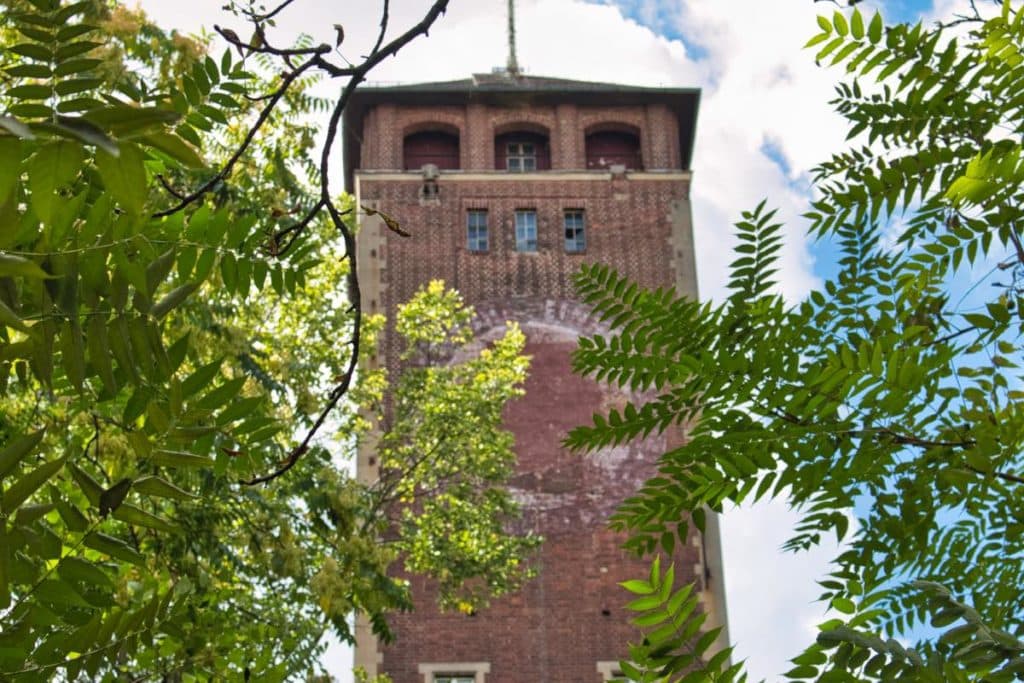

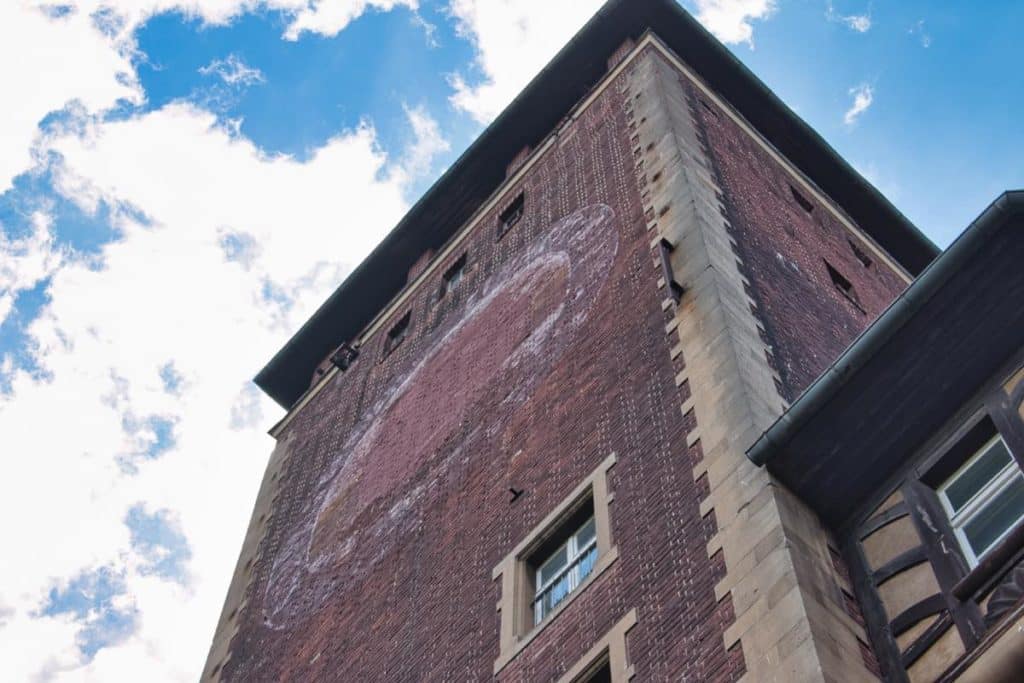
Potsdam Kremlin
The Kremlin towers menacingly over Potsdam. And like its Moscow brother, it was also built before the rule of socialism in Potsdam. The former Royal Prussian War School was first used by the Soviet military administration after the Second World War, before it became the seat of the SED (Socialist Unity Party of Germany) district leadership in 1952. A huge SED logo was then painted on the front of the tower, which was still emblazoned there until the 1990s. Even today, the emblem with the handshake is still dimly visible. After reunification, the Brandenburg regional parliament used the building for meetings until it was moved to the rebuilt city palace.
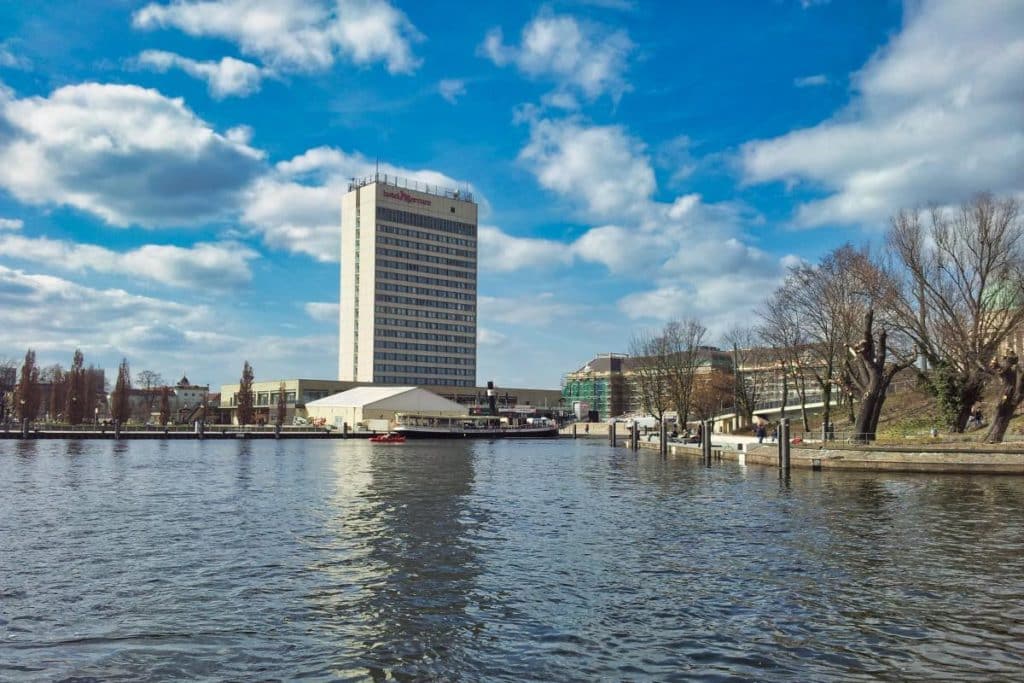
Interhotel Potsdam – Mercure Potsdam
Potsdam, too, was to be resurrected as a socialist city after the destruction of the war and due to its role as the district capital in the GDR. That’s why Walter Ulbricht personally gave the order to have the city centre rebuilt in 1967. The building has had 17 storeys since 1969 and is 60 metres high. Even today, you can still stay here on the upper floors* and enjoy the best view, not only of GDR Potsdam.
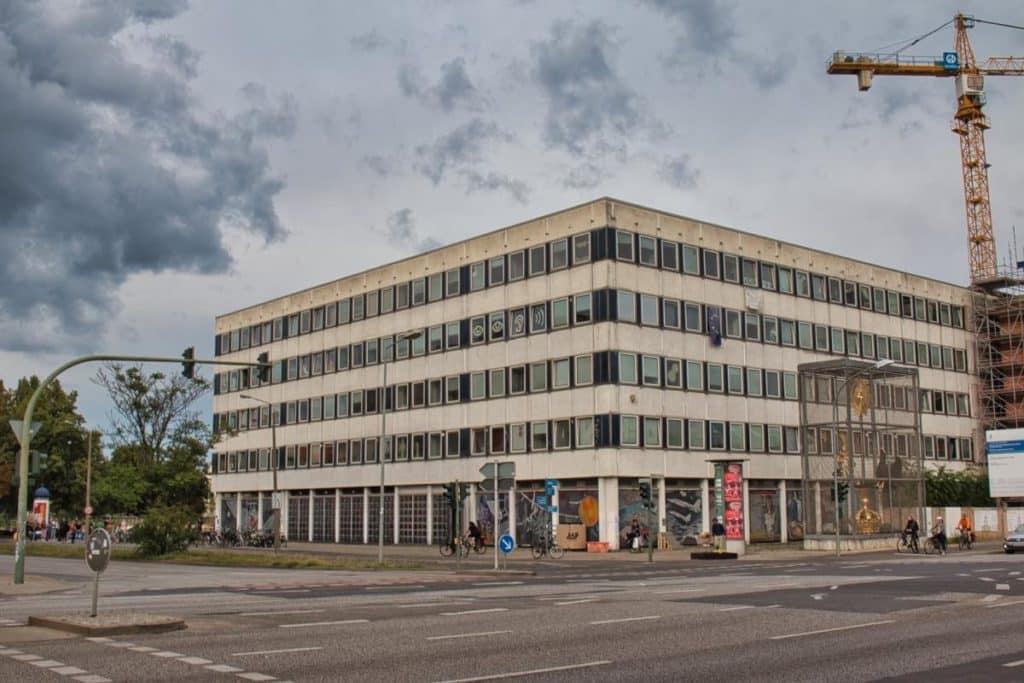
Computer centre – Major processes for GDR statistics
The data processing centre of the VEB Maschinelles Rechnen (State Owned Company for Machine Computing) of the Potsdam district was built between 1969 and 1971 on the site of the Garrison Church, which was blown up in 1968. The former façade design by the architects around Sepp Weber has disappeared since reunification. The building, also known as the computer centre, housed several mainframe computers that were responsible for data processing for the administration in the district. Data was collected and processed mainly for the statistics authorities. After reunification, there was still a successor operation until 1995. In the meantime, however, the demolition of the computer centre has been hotly debated. It is currently being used as a creative spot. The users want to preserve it.
Mosaic “Mankind conquers the cosmos”
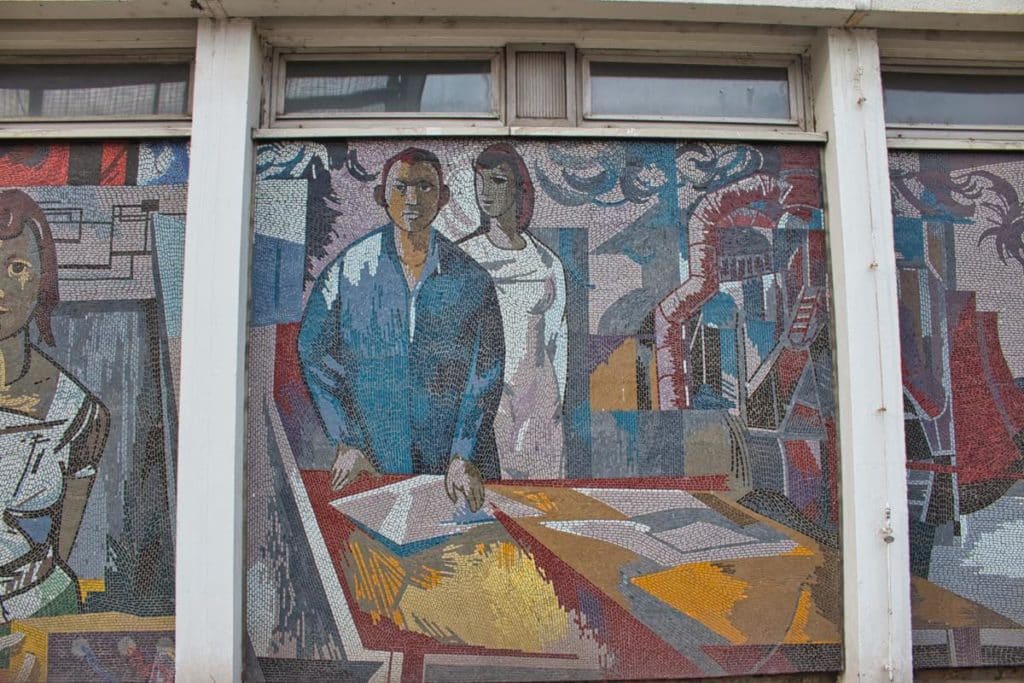

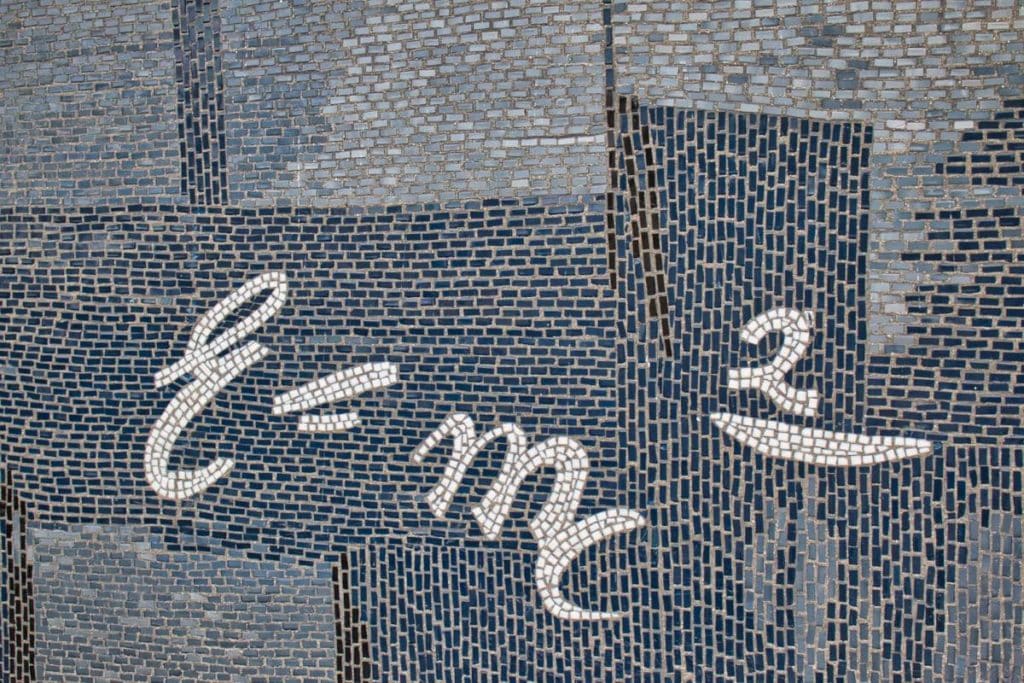


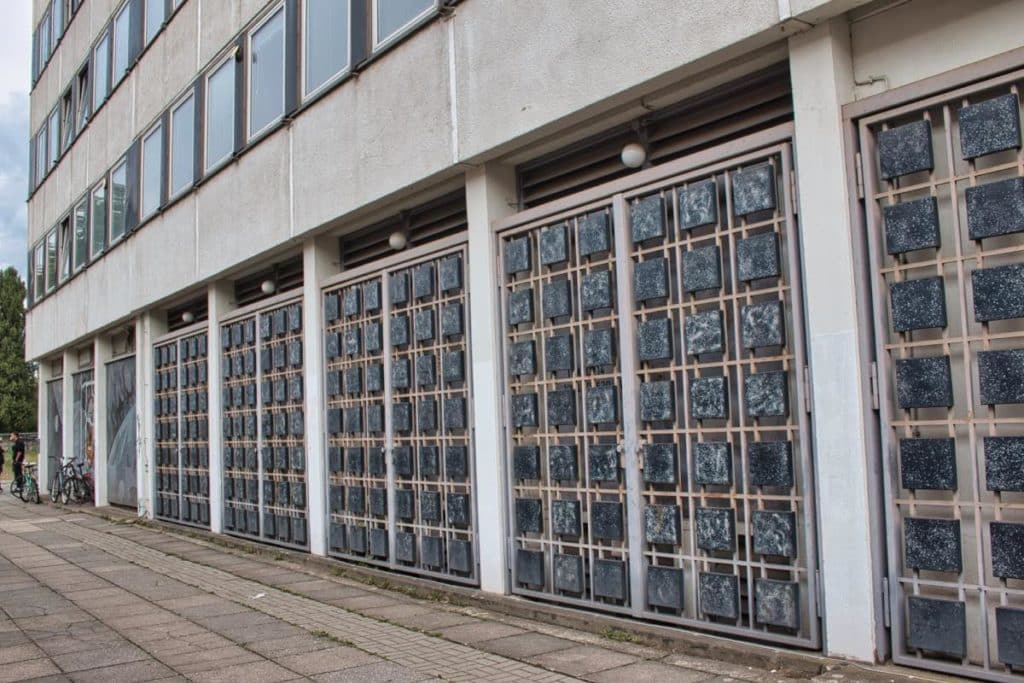
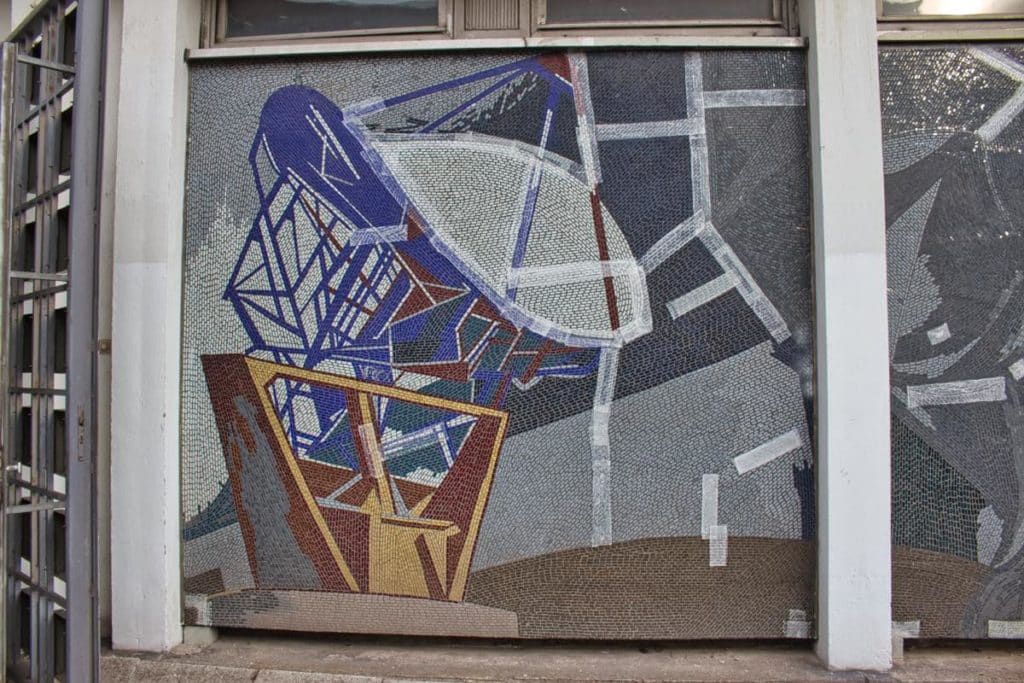


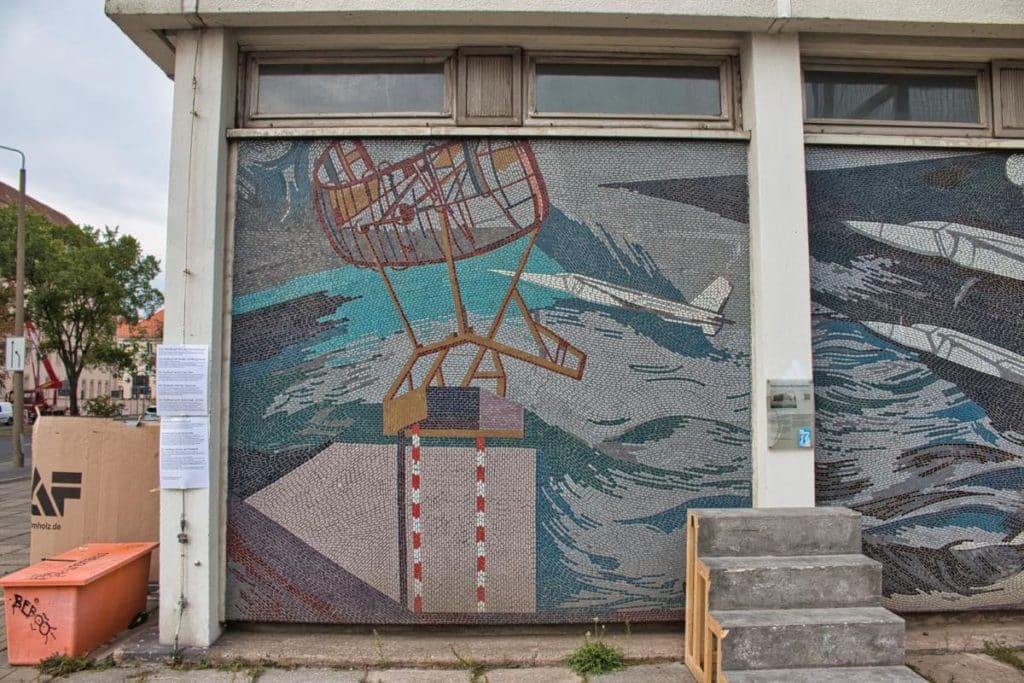


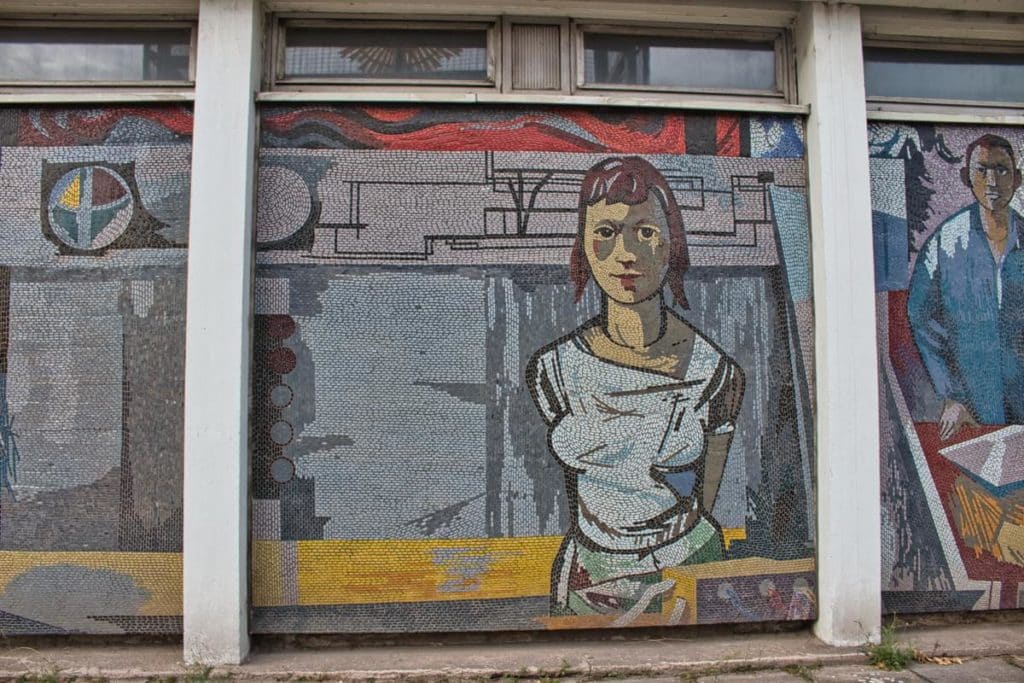
Particularly striking at the computer centre is the wall mosaic “Mankind Conquers the Cosmos” (“Der Mensch erobert den Kosmos”), which has become quite famous in the meantime. It celebrates the achievements of the working class as the GDR authorities saw them. In addition to computerisation, it depicts, for example, the attainment of outer space and the development of the socialist defence forces. According to the mosaic, the scientific and technological revolution was on its way to overcoming capitalism. In total, the 18-piece mosaic is 70 metres long and encircles the computer centre on three sides.
Café Minsk – Museum for GDR Art
Café Minsk was a project of German-Soviet friendship. The Potsdam restaurant was built in Minsk at the same time. In this way, the Potsdam district and the Minsk district were linked in partnership. Artists from Belarus were even involved in the design of the café, which was built between 1971 and 1979. Inside, motifs from Belarusian folk art were depicted and murals showed scenes from Minsk. There was a beautiful view of the city skyline from here. After 2000, the building fell into disrepair until it was bought by SAP co-founder Hasso Plattner in 2019. Now the Minsk is being renovated and will become a museum for GDR art from autumn 2021. Exciting!

Restaurant Seerose – Valuable hypar bowl made by Ulrich Müther
On the other side of the Havel river, another café still stands today and continues to be used as a restaurant. The Seerose is one of the hypar shell buildings erected by Ulrich Müther. Examples of hyparshell architecture can also be found in Magdeburg or Warnemünde. Today they are considered icons of GDR modernism. Müther took the Los Manantiales restaurant planned by Félix Candelas in Mexico City as his model. Unfortunately, the interior was largely destroyed during a non-approved reconstruction in 2013.
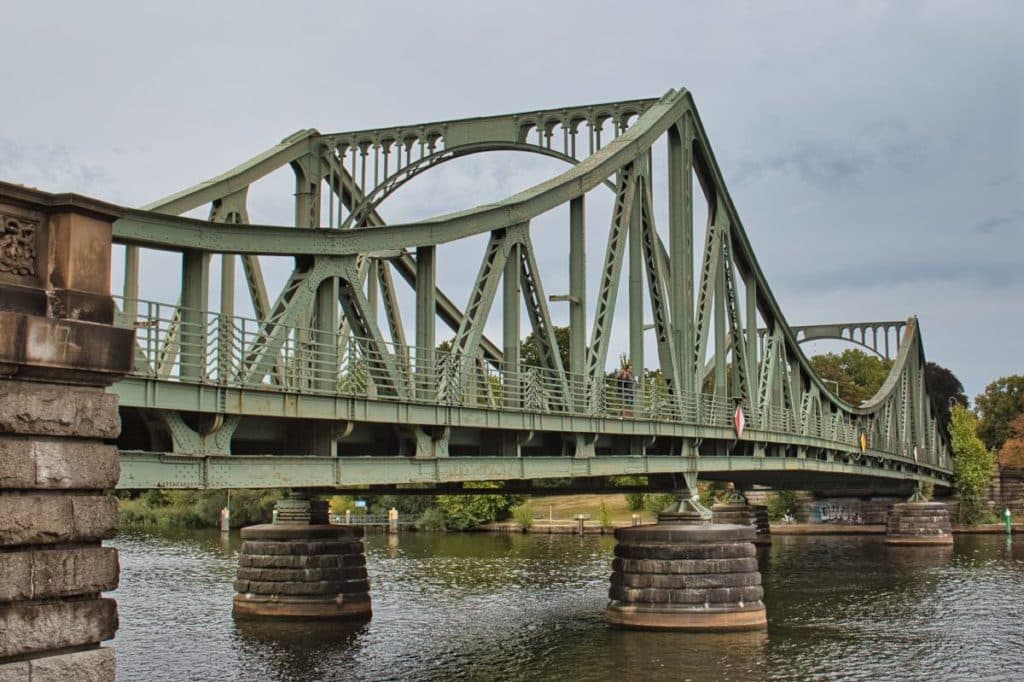
Glienicke Bridge
Since West Berlin bordered Potsdam to the west, there was also an inner-German border here. The Glienicke Bridge has become particularly famous because exchanges of spies, agents and political prisoners often took place here during the Cold War. During the war, the bridge had been destroyed, but it was rebuilt as early as 1947. In 1949, the GDR authorities renamed it the Bridge of Unity. What an irony, given that it was part of the Berlin Wall.
Babelsberg Film Studios
Even though the film studios in Babelsberg date back to imperial times, the Nazis shot propaganda films here and many famous films were made here even after reunification, Babelsberg was also the centre of the GDR film industry. Almost all the well-known GDR films such as “Spur der Steine”, ” Die Legende von Paul und Paula”, “Drei Haselnüsse für Aschenbrödel” and many others were shot here. So there is a lot to learn about the old films in the studios.
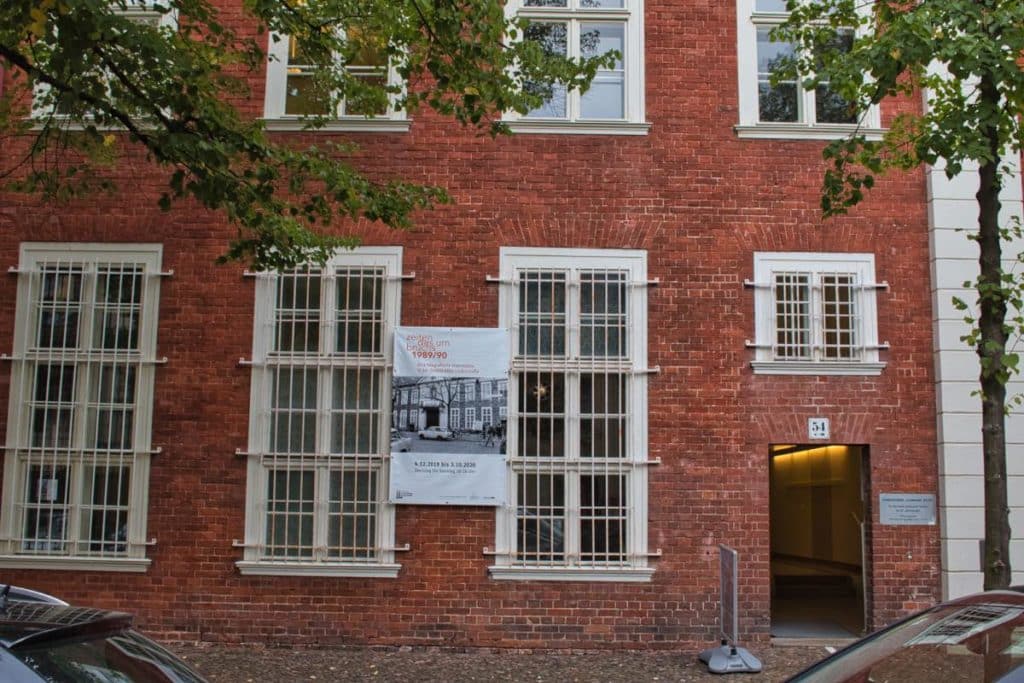
Lindenstrasse Memorial
In addition to places of entertainment, there were, as in every GDR district, places of humiliation and torture. Potsdam also had a Stasi remand prison. Unlike in many other GDR cities, in Potsdam it was located in the middle of the old town. People had already been imprisoned at Lindenstrasse under the Nazis. The Soviet KGB and the GDR government used the building in the same way. Although prison conditions improved over the years, they were still not comparable to today’s prisons. The exhibition in the house recalls the suffering that befell the exclusively political prisoners here during the dictatorship.
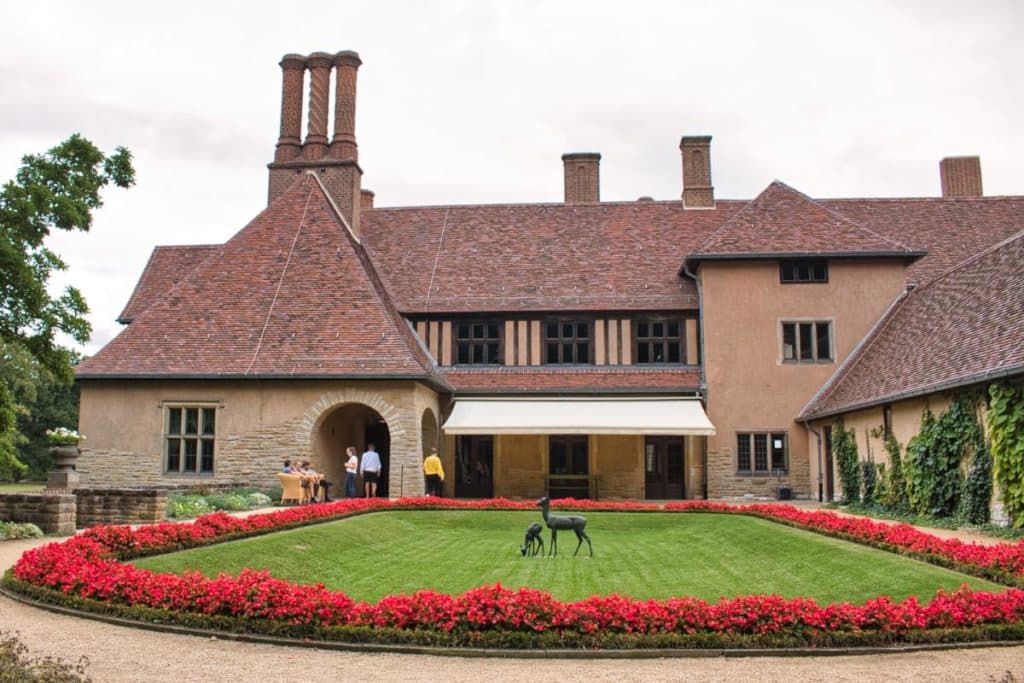
Cecilienhof Palace – Site of German Division
Cecilienhof Palace is best known for serving as the meeting place for the Potsdam Conference, where Stalin, Truman and Churchill settled the post-war order. Photos of them were taken in the courtyard of the palace and the conference hall has been preserved in its original state and can be visited. Here they decided on the division of Germany into occupation zones and laid down the new external borders of the defeated Germany. Each occupying power was allowed to act autonomously in its occupation zone, without objection from the Allied Control Council. And so the enforcement of Soviet power politics in the eastern occupation zone soon followed.

Forbidden Soviet City in Potsdam
Only a few metres from Cecilienhof Palace, the decisions made there had a direct impact. For in the Nauener Vorstadt, all residents lost their flats in the course of confiscation of their buildings by the occupying power. Consequently, in addition to the GDR, Potsdam also had a small Soviet Union in the truest sense of the word. Here, until the withdrawal of Soviet troops from Germany in 1994, there was a secret city for Soviet military personnel only. Also called the “forbidden city”, the quarter was not accessible to normal citizens. Employees of the German counterintelligence headquarters of the Soviet military and their families lived and worked here.
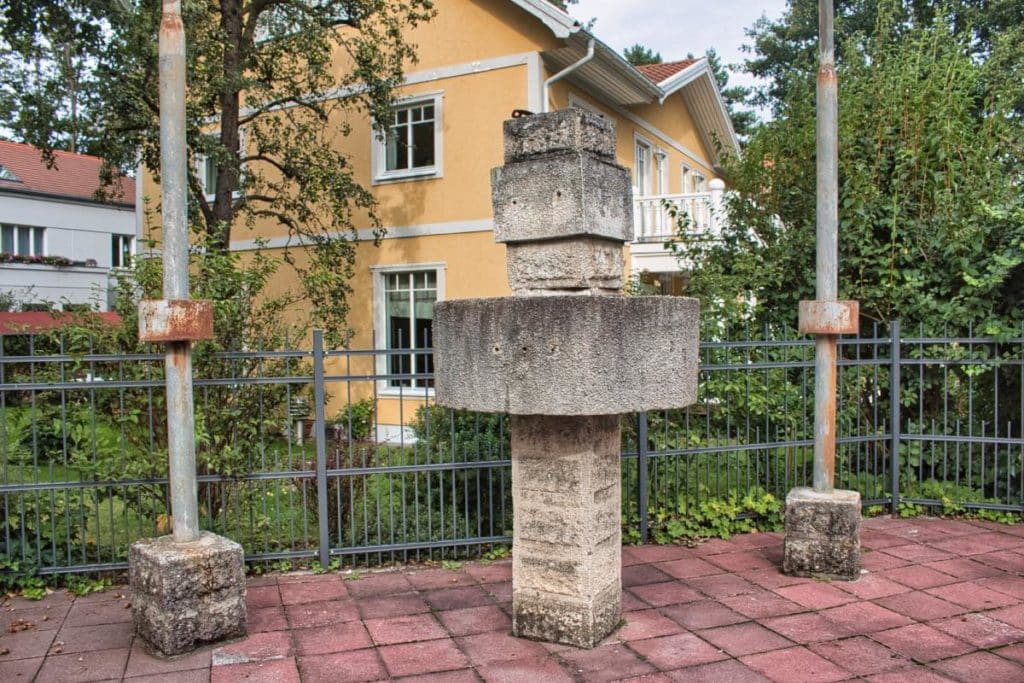
A city within the city
The Soviets also called the secret city Military Town No. 7. An educational trail with 14 stops explains all the important places of the secret city and their functions. Today, all that remains of the former city are fragments of the security installations, a few signs and old monuments. The area was once surrounded by a wall and watchtowers. Potsdam citizens gave it a wide berth. 350 soldiers guarded the grounds and kept unwanted guests out. Inside, there was everything the Soviets needed: a polyclinic, shops, clubs, flats and even a hotel.
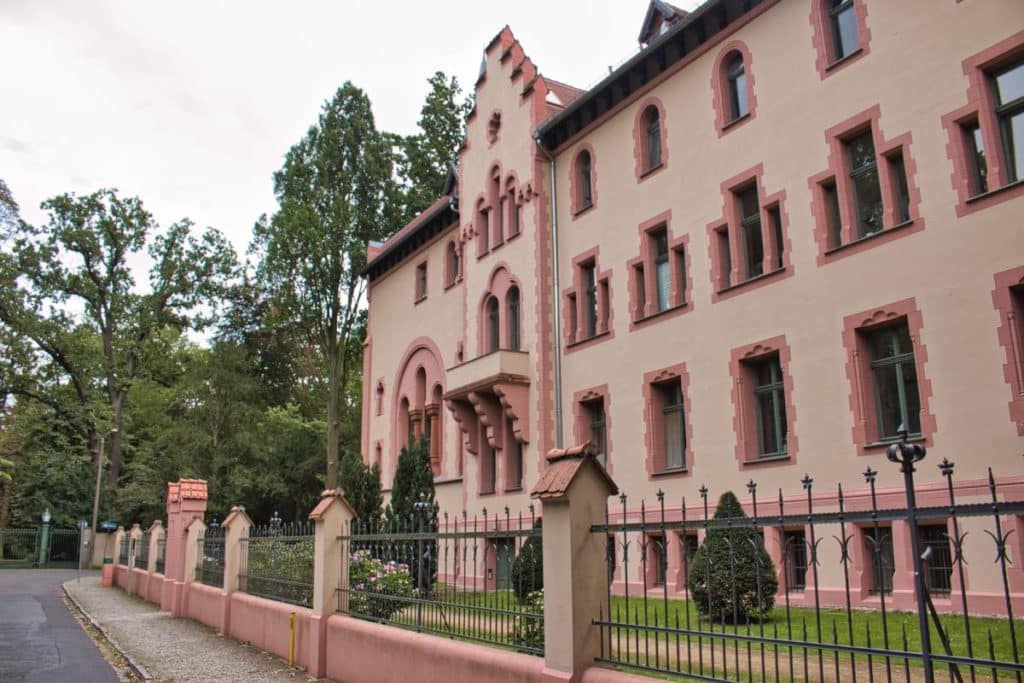
Soviet Military Tribunal
Even before the Potsdam Conference began, the headquarters of the KGB’s military counterintelligence service was installed in Potsdam. The girls’ boarding school of the Kaiserin Augusta foundation was converted and served as the service’s headquarters until 1994. The chapel became a courtroom. The cross was replaced by Lenin. Quite a few convictions, also against Germans, took place here.
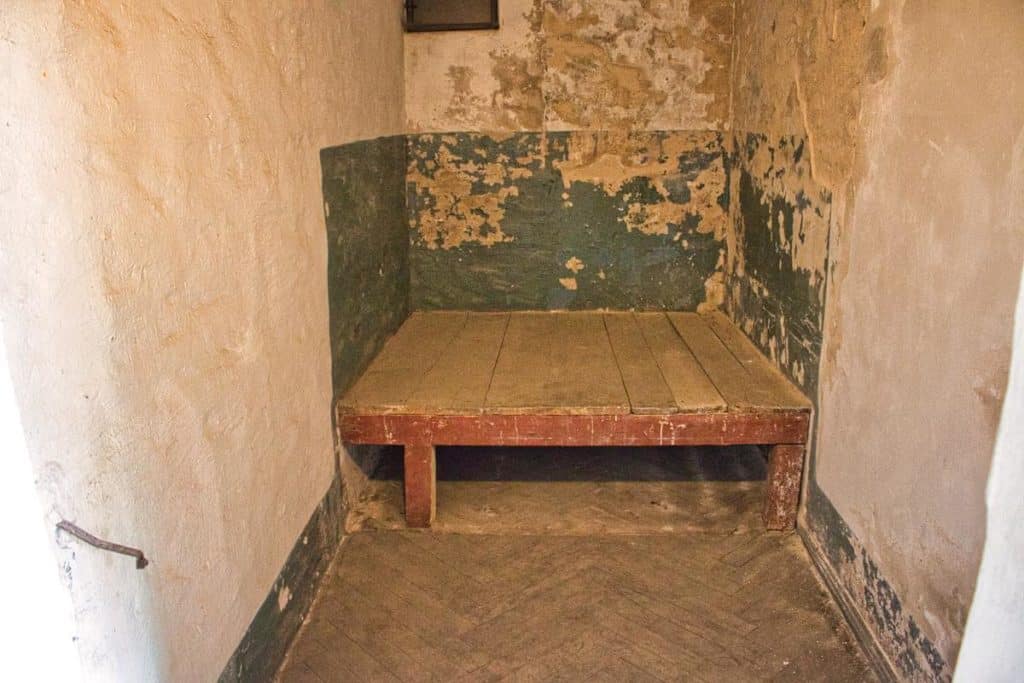
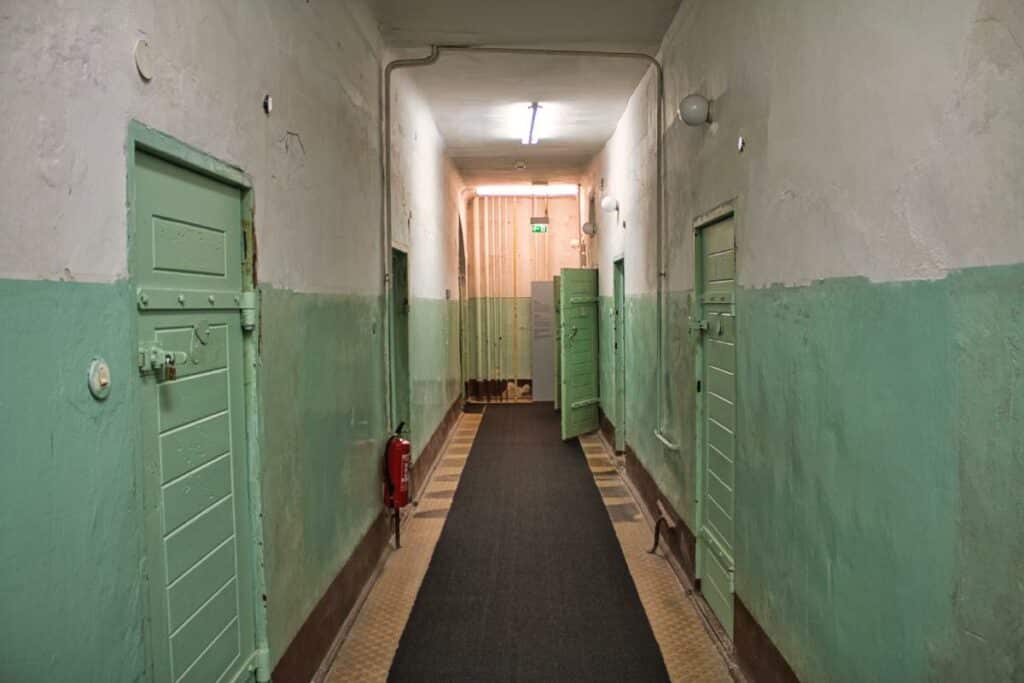

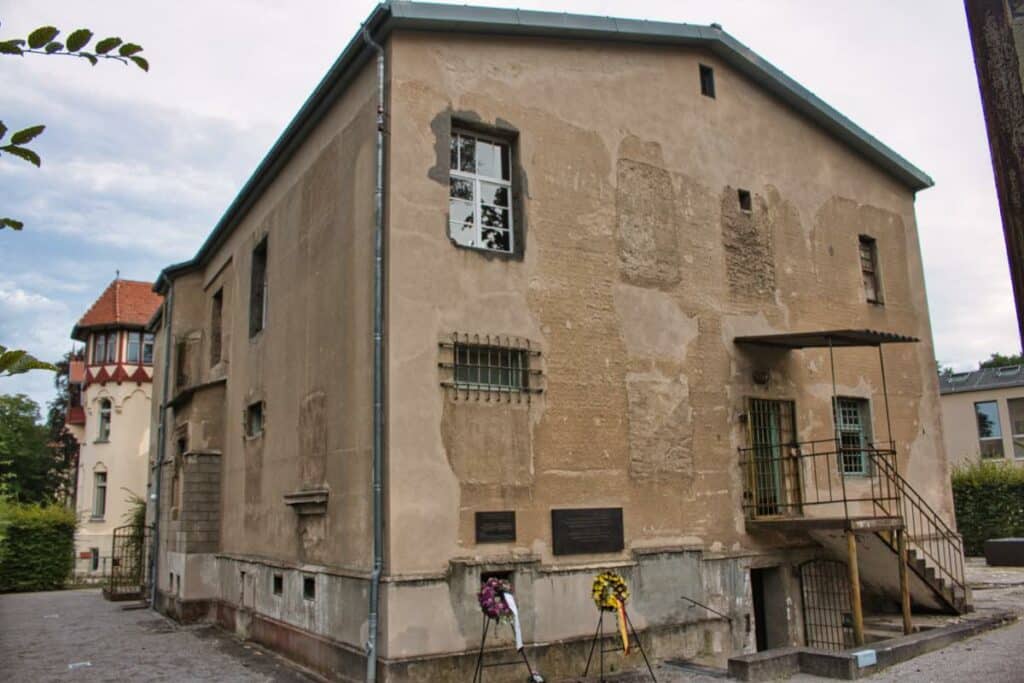
Leistikowstrasse Memorial
The expropriated buildings also included the building of the Protestant Women’s Aid. Detention cells were set up in the basement of the building. From now on, citizens of the Soviet occupation zone who were a thorn in the side of the Soviets were imprisoned here. Many of them were innocent, but in the course of Stalinist paranoia they became the target of the Soviet secret services. Many were deported from here to KGB prisons or to Gulag camps in the far east of the Soviet Union. Many never returned home. In the exhibition in the former cells, both German and former Soviet prisoners tell of the torments in prison.
Do you know any other places in Potsdam Germany from GDR times or special buildings and works of art from the GDR here? We look forward to hearing about them in the comments!
Book recommendations
No products found.
No products found.
Trilingual (German, English, French) guide to the most beautiful places in the residential city.
- Borngässer, Barbara (Author)
No products found.
No products found.
No products found.
No products found.

